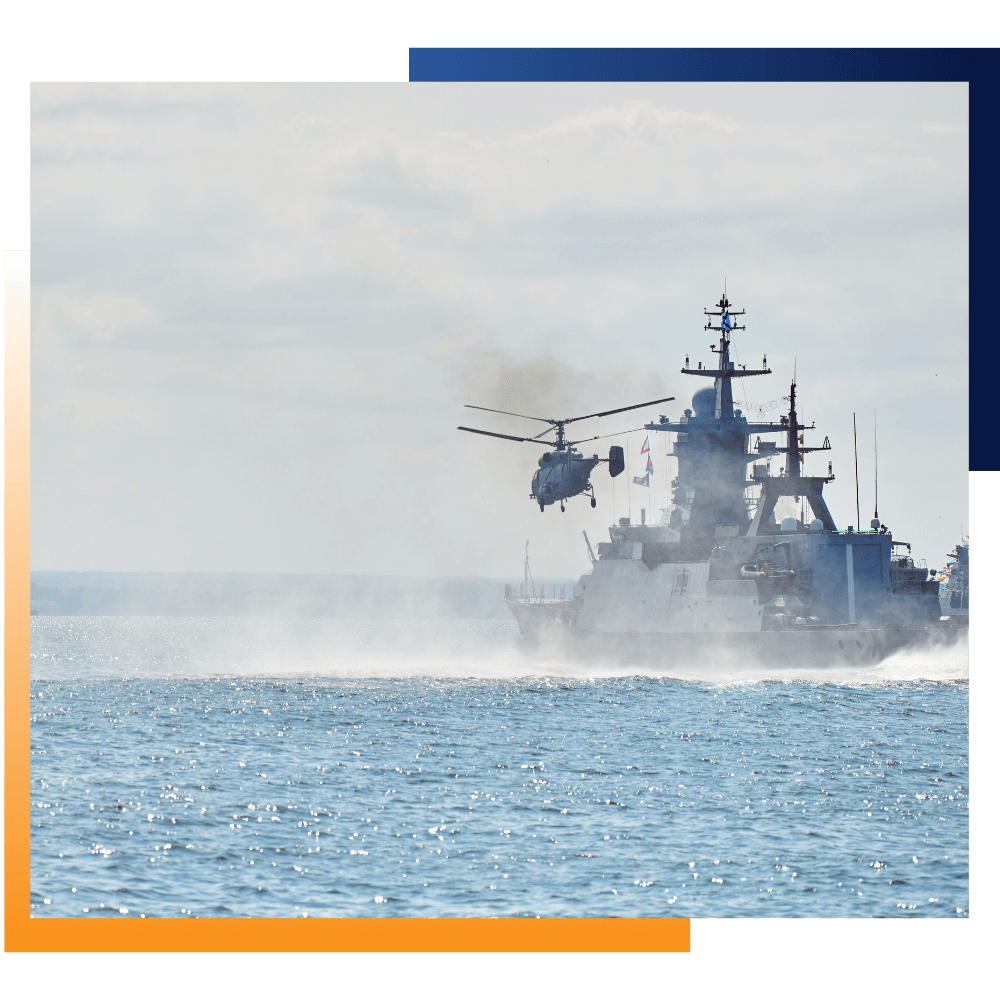Secure Embedded Military Systems for National Defense
Industry: Military systems
Great Power Competition creates the urgent need for more capable and robust systems. RunSafe Security provides cyber defense solutions proven effective for military use cases, protecting embedded software in weapons systems from cyber exploitation. By implementing RunSafe’s advanced security measures, the military safeguards critical systems against unauthorized access, tampering, and sabotage, ensuring operational reliability and mission success.

Challenge
Adversaries target software in military systems to compromise weapon functionality. This situation is asymmetric with small cyber attack teams developing kill chains for crucial and costly weapon systems. In addition, traditional cybersecurity measures such as scanning and patching often fall short in addressing the specialized needs of these systems, leaving them exposed to potential threats.
“From our perspective, adding RunSafe means we have more opportunity to shrink the attack surface and reduce overall risks for our customers since security is now already built into our product.”
Key Features:
Automated protection for air, sea, space, and ground systems
Minimized attack surfaces
Seamless integration with existing military systems
Futureproof from zero days

Solution
RunSafe offers a comprehensive cybersecurity solution designed for embedded military systems.
Key features of RunSafe’s solution include:
- Seamless integration: RunSafe’s cybersecurity measures can be easily integrated into existing systems. Integration uses current software build processes and does not change the original functionality of these systems.
- Automated protection: RunSafe’s solution disrupts attacks before they can impact operations.
- Minimized attack surfaces: By employing software memory protection, RunSafe reduces the potential attack surfaces, preventing adversaries from exploiting vulnerabilities and disrupting operations.
- Futureproof from zero days: RunSafe’s software solutions are designed to eliminate exploitation of the entire class of memory-based vulnerabilities, both known and unknown future vulnerabilities. Memory-based vulnerabilities have the most known exploits targeting them as compared to any other class of vulnerability.

Latest Resources
The Top 6 Risks of AI-Generated Code in Embedded Systems
AI is now woven into the everyday workflows of embedded engineers. It writes code, generates tests, reviews logs, and scans for vulnerabilities. But the same tools that speed up development are introducing new risks—many of which can compromise the stability of...
Beyond the Battlefield: How Generative AI Is Transforming Defense Readiness
When people picture AI in defense, they usually imagine automated drones, robotic soldiers, or high-stakes scenarios at the edge of conflict. But generative AI’s biggest impact today isn’t on the front lines at all but in the workflows, decisions, and systems behind...
Meeting ICS Cybersecurity Standards With RunSafe
Meeting ICS cybersecurity standards, such as IEC 62443 and NIST 800-82, requires more than just documenting policies or checking boxes. Industrial control systems rely on complex, layered software stacks—much of it legacy, third-party, or built with older...
DoD Example
Weapon system programs across the US Department of Defense (DoD) are implementing RunSafe protections.
Software development teams, either within the DoD or within a Defense Contractor, integrate RunSafe at build time
for protection at run-time. RunSafe implementation has achieved Technology Readiness Level 9 (TRL 9).



